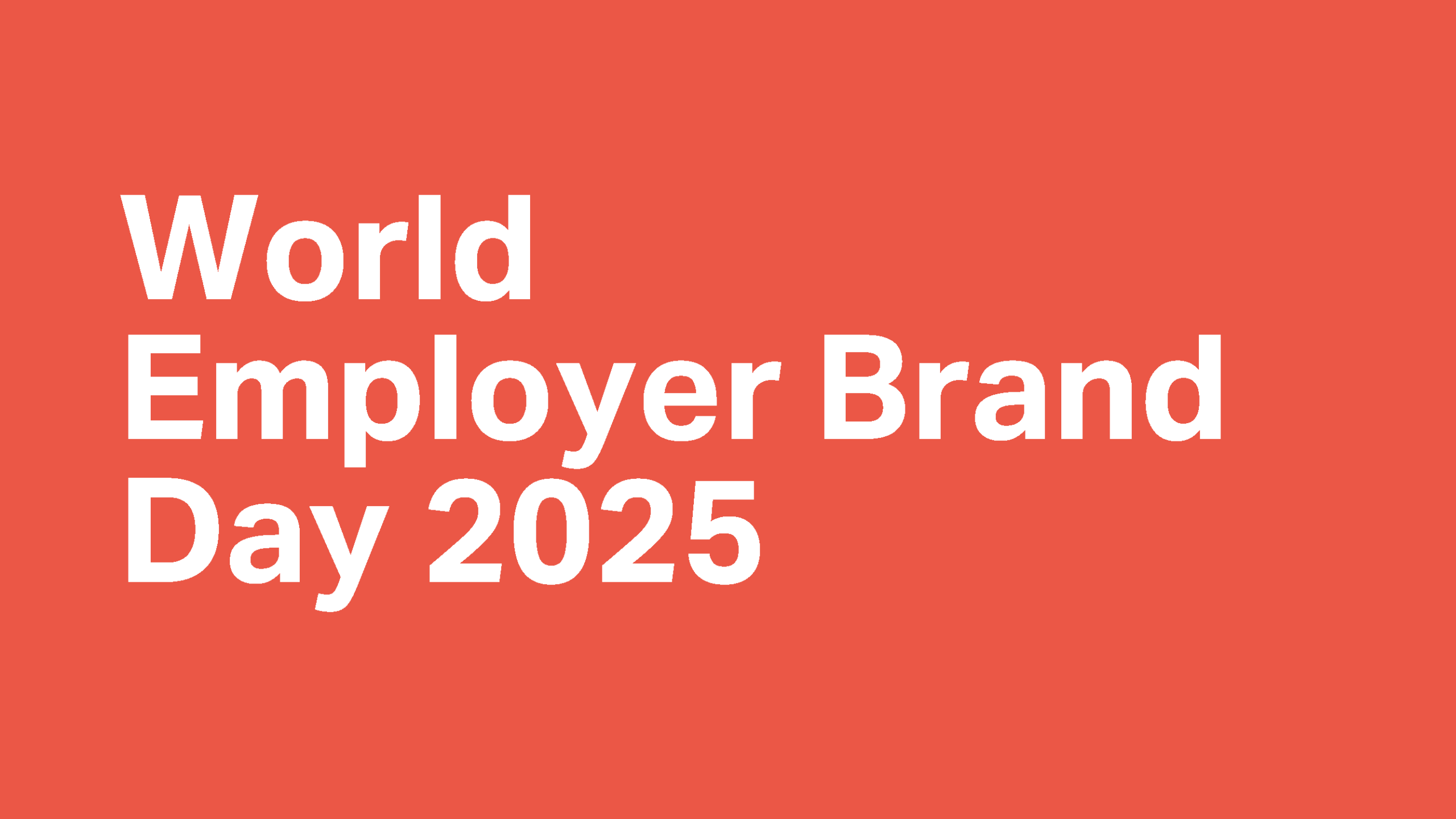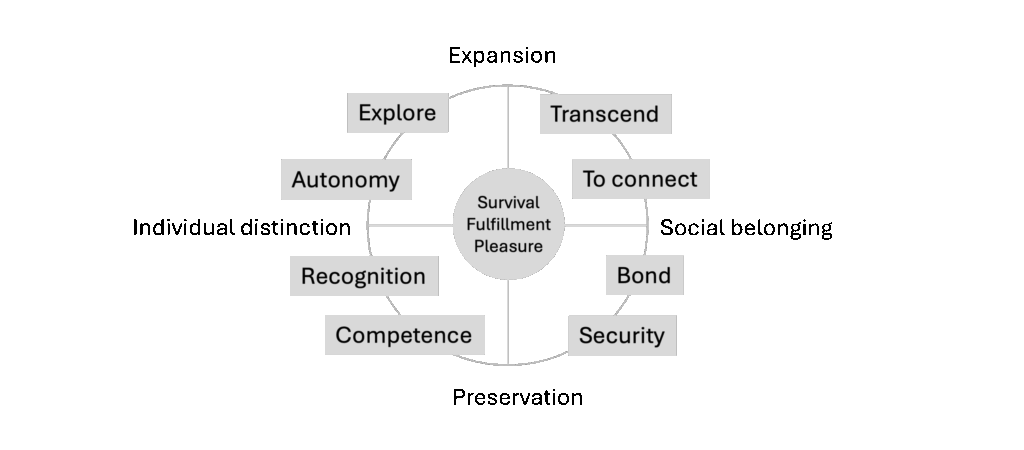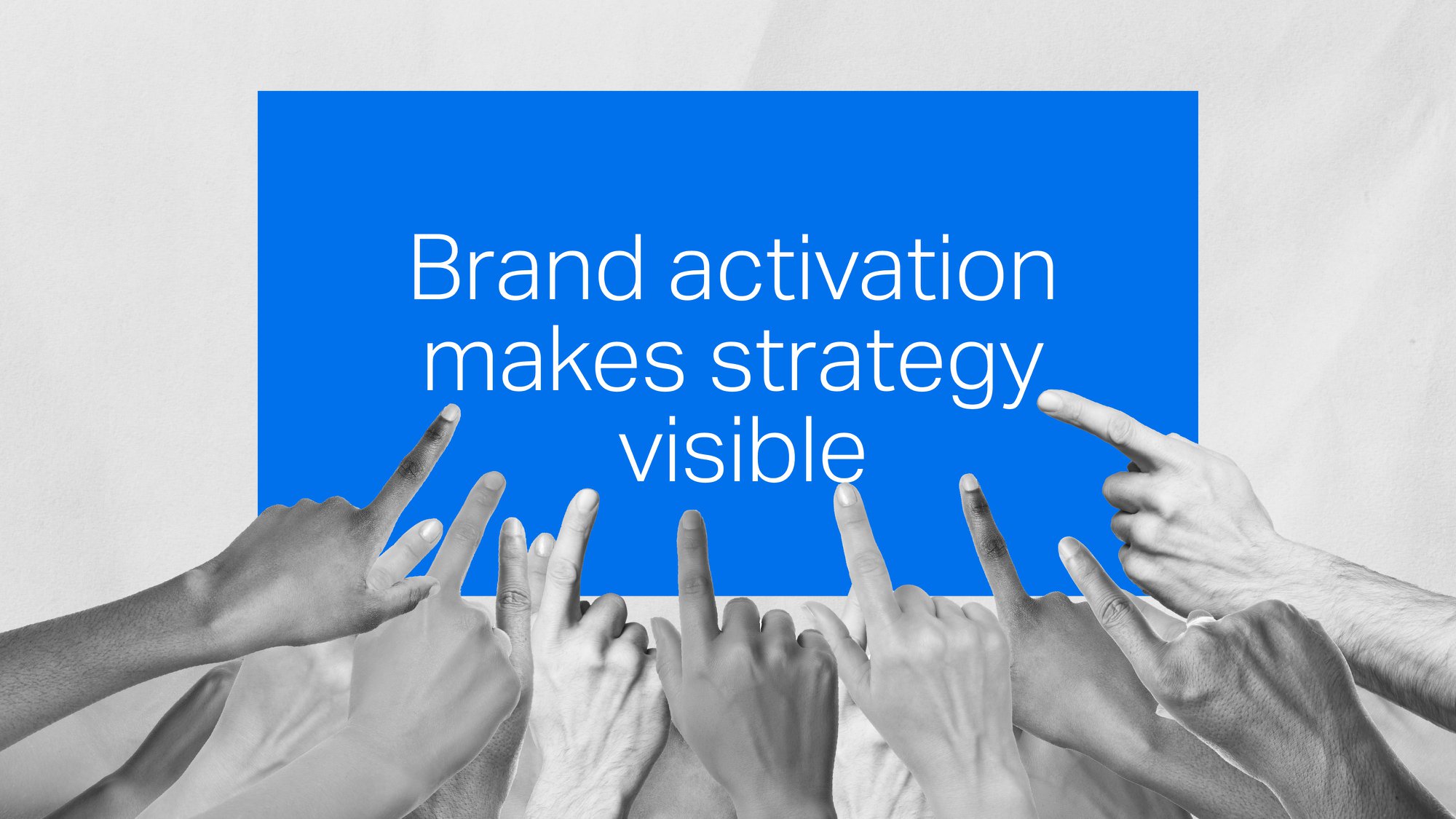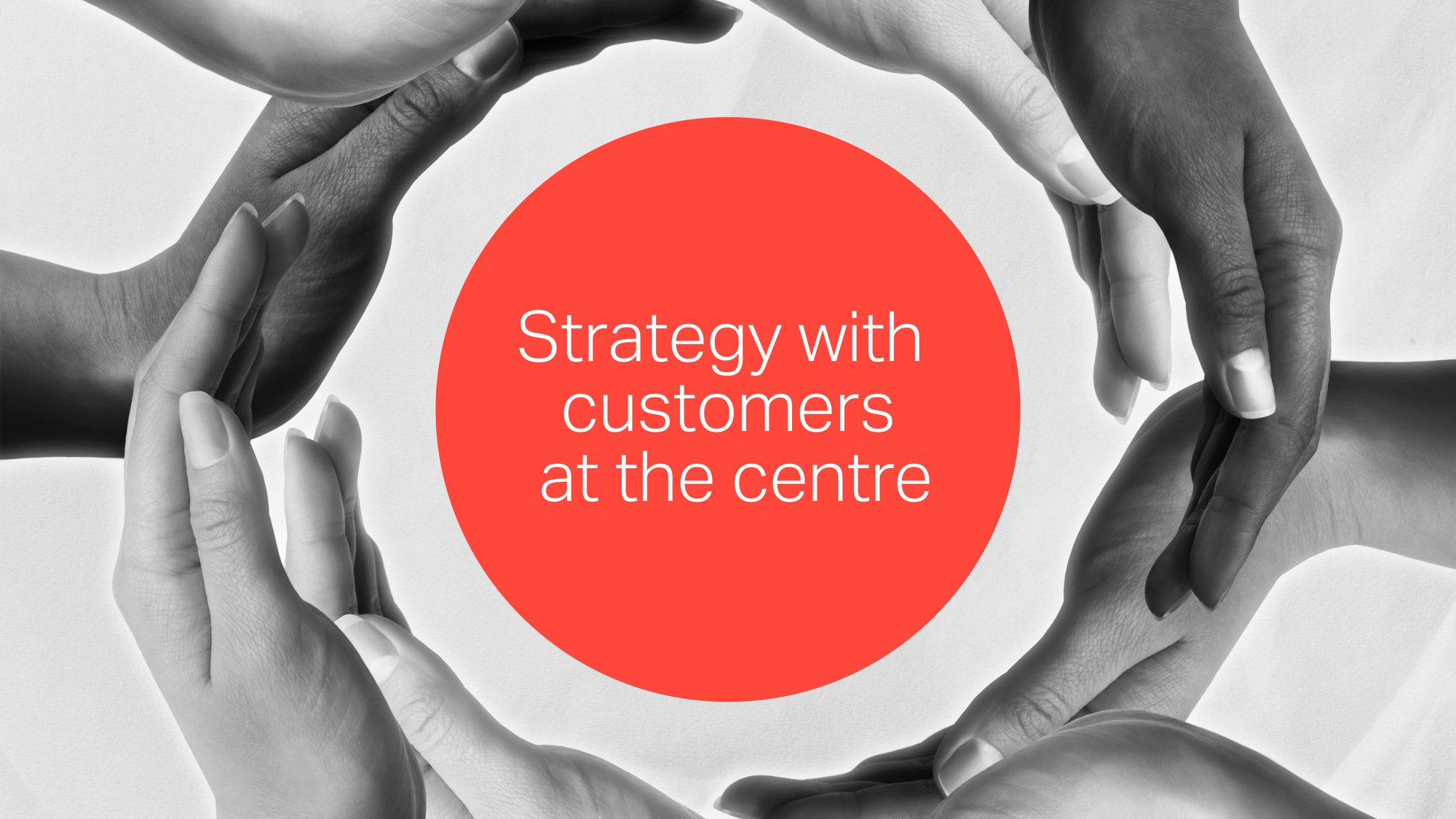World Employer Brand Day

I’m off to World Employer Brand Day in Amsterdam, where I’ll be looking forward to exchanging stories with executives and consultancies and learning more about where our wonderful industry is headed.
For me, 3 priorities are playing on my mind:
- How generative AI will accelerate the amount of salient content for employees and candidates
- How behavioural science can unlock employer brand experiences that improve the cognitive connections people have with a brand
- How data can be better collated to target the people we need to attract and retain to drive performance
I wanted to look at each in turn.
1 Generative AI: Speed to market – with salience and accuracy
Let’s start with a couple of common social media posts.
“We’re looking for a [insert job]”, or “Do you want your next career to be in [insert job].” They have been everyday staples of the recruitment marketing sphere.
Equally, internal communicators calling for “Volunteers to [insert need]” or “Why don’t you think about [X] training course?”
All admirable offers, but all start from the point of view of the brand making the offer. They are not guided by any sort of behavioural insight. And for me, this is where the gold dust lies. Understanding what makes your candidate or employee tick and then creating content that is tailored just for them.
Take a look at these two examples:
- “Do you want a job as a marine biologist?”
- “You want to explore robotics and change how we harness our oceans.”
The first makes clear the job and who is qualified to fill the role. The second has much more colour. It appeals to the motivational drivers for certain candidates – emerging technology, change, the potential of marine. Yes, there are a few more words, but it is painting a picture.
It also takes time to write.
Using generative AI and Personas
And this is where Generative AI, combined with carefully crafted personas, gives us the opportunity to make content that is relevant, timely, and personalised to an individual’s career needs. Alternatively, as Behavioural Scientists might advocate, AI-powered EAST (Easy, Social, Attractive, Timely) content.
Best practice will focus on how we use AI to scale personalisation and authenticity. This shift moves us away from using generic copy at scale in the hope of catching a big fish, to a place where we are generating tailored copy at scale to catch more fish individually.
Where previously our communications acted like a net sucking in fish and anything else the ocean had to offer, AI offers us the chance to reach out and catch fish with a piece of bait crafted for the tastes of the candidate or employer the brand needs.
Heineken has been highly effective at this, using AI to analyse what potential candidates are saying online and then using those insights to create highly targeted recruitment campaigns – most recently in Mexico. According to Emi Labs, this approach has saved Heineken recruiters more than 10,000 hours each year.
This is a form of using AI to create content salience, aligning it directly with the potential candidates existing conversations and interests shows the power of AI to identify and engage.
But all this relies on a brand knowing who they need to attract and retain, and that starts with behavioural-led personas that clearly articulate the core competencies a business needs to succeed.
Here at The Team we’ve done this successfully for clients like Colt and Jerónimo Martins, giving them the foundations for marketing communications to candidates and the EVP pillars to keep their efforts focused on what matters for employees.
Taking behaviour-led personas and plugging them into an AI tool that can listen to the conversations your candidates are having and then combine that with the latest content from your website means you have a targeting tool where you are having far more meaningful and authentic conversations with clients.
Let’s look at an example using one of our clients where we are doing just this.
Here’s a simple AI instruction.
Please examine the latest stories being shared by [insert client pathway] and develop a social media post designed to attract a senior manager in an onshore technology role for data science and software engineering – based in Porto.
The social media post should be no more than 100 words in length and end with the line ‘[Campaign Tagline]’.
The persona this needs to appeal to is outlined below.
Collaborative problem solvers who want breakthroughs in business
These candidates and employees love to understand and analyze complex problems, then develop solutions in collaboration with other teams and partners.
They enjoy understanding how systems and interfaces work together and the insight and data that can be used to improve the existing processes and tools we use. They love invention.
These employees already have deep domain expertise. That journey of discovery continues as they enjoy learning from others and continuously sharing their own experience.
They are people who love to talk about the innovation and tech that [client] is applying.
They love:
Collaboration and problem solving
Networking and relationship building
Insight and data analysis
And here’s gen-AI’s work:
You’ve been talking about making the energy the world needs today more efficient. [Client name] is driving those breakthroughs with major revenue growth, pioneering floating production solutions, and award-winning innovations like near zero-emission FPSOs and advanced robotics for safer, smarter operations. If devising tech-driven strategies, collaborating with global teams, and leveraging that rich insight excites you, then join our Technology team in Porto and shape tomorrow’s offshore energy. Calling Data Scientists and Software Engineers.
‘[Campaign Tagline].’
Now, AI still has a way to go when it comes to creating truly nuanced content that taps into the unique requirements of every persona, but you can see here how it has picked up on ‘collaboration’, ‘rich insights’, and ‘global teams’ to craft a post designed to appeal to one persona.
Repurposing, automating & localising content
Moreover, this single post can be automatically transcribed, translated, and repurposed by AI into multiple formats: into email newsletters, internal announcements, or scripts for recruiters.
Films can be translated and converted into social media posts; translated and transcribed; or even shortened into 30-second clips and made relevant to specific audiences.
AI can also identify employee advocates and assist them in creating content. How often are you asked whether there is someone in your company who might act as a spokesperson? There are. You know there are. But where?
An AI tool could engineer a draft of a LinkedIn post about a technical achievement, ensuring it’s engaging and on-brand, which an identified employee – selected via machine learning listening – could then personalise and post.
2 Behavioural science unlocking employer brand experiences
We’ve long believed that an understanding of behavioural science can unlock better brand experiences for employees and candidates.
But how?
After all, we are all different. We all come to work having been shaped by different experiences and with different values. We may choose to proscribe to the organisational values set out by our respective companies, but deep down what motivates us to act will be different.
This is where the work of Shalom Schwartz can provide intelligent insight, and where models like E.A.S.T. help Employer Brand Managers create experiences that work.
Let’s start with Shalom Schwartz, a social psychologist who created the theory of Basic Human Values.
In the opening to his overview paper, Schwartz states:
“Values have been a central concept in the social sciences since their inception. For both Durkheim (1897/1964) and Weber (1905/1958), values were crucial for explaining social and personal organization and change.”
There are 10 basic values, and Schwartz’s model is understandably quite complex, as anything explaining humans would be. He points to conflicting values such as benevolence vs power, but his basic point is clear – the values inherent within us drive action.
As he says, “When values are activated, they become infused with feeling. People for whom independence is an important value become aroused if their independence is threatened, despair when they are helpless to protect it, and are happy when they can enjoy it.”
Understanding the values that matter to your people
At The Team, we use a simplified version of Schwartz’s model (below) to explore what motivates your employees today and to understand the differences between where their values lie as individuals versus the values the brands they work for have identified as critical to success.
Set against two axis it helps us explore an employee (and team) propensity for expansion and exploration over control and self-preservation; and individual performance and distinction over connection, belonging, and relationships.

Why does this matter?
To start, you need diverse skills and experiences inside your organisations. Recruiting everyone with the same values set leads to groupthink. See Mathew Syed’s book Rebel Ideas for how damaging groupthink can be.
Gunter Bombaerts, Andreas Spahn, and Erik Laes have written a brilliant piece on how Schwartz’s universal human needs can be understood and then utilised in the energy sector. If you are from Shell, bp, or Total, then it is well worth a read.
I’m keen to understand more about how organisations are moving away from a cookie-cutter approach to brand experiences for employees and candidates and instead crafting multiple experiences to appeal to different types of people.
Three Ps for Employer Brand
And then, how are we using behavioural science to Prime, Proof, and Personalise content.
I’ve already outlined above how we can use AI to harness personas, job ads and proof points to create subtle cues in job descriptions, social media posts, and career sites thereby priming candidates. But how can we also use more authentic employee stories, team photos, and/or User Generated Content to act as proof to leverage the trust principle i.e. people trust their peers more than any corporate message.
Or, how can we build an employee’s feeling that they already have a stake in the company, and how can we do this from day one? Giving personalised feedback from the moment they contact your organisation or finding out when and how they want to received communication (written, verbal, or visual) will make them feel valued and increase their connection to your brand.
IBM has recently shifted its Performance Management to reflect these types of drivers. Today their system focuses on Business Results (proof), Development of Skills for the future (priming), the Values and Behaviours that are essential to helping IBM succeed (personalisation). You can hear IBM’s CHRO Nickle LaMoreaux talk about this on LinkedIn.
Go E.A.S.T.
Priming, Proofing, and Personalisation are just three examples of behavioural nudges that can be used to make experiences for candidates and employees more Easy, Attractive, Social, and Timely (EAST).
I could just have easily talked about recency bias, scarcity bias, or reducing friction as tools for us to deploy. The work of Richard Shotton in The Choice Factory is a great start point for understanding how behavioural science can be deployed to result in better outcomes when building brand relationships.
Let’s talk about making things Easy.
Standard Chartered Bank has openly discussed their “Talent Marketplace” that connects employee skills, experience, and aspirations to short-term opportunities and mentoring partnerships within the bank. The platform empowers people to collaborate and drive innovation while advancing their career growth.
Think about that earlier persona I shared. A product like this is incredibly Attractive. Combined with stories about how employees are using the platform, it becomes more Social. And then targeted at personas at mid-year review – or at candidates during standardised annual review periods – and it’s easy to see how the bank has a Timely product that can bring its EVP effectively to life.
3 Data, insight, and targeting the people we need to attract and retain
Being data-driven means being joined-up.
If you have experienced what I have in past Employer Brand and EVP projects then you’ll be equally frustrated that data is often siloed. Performance management, exit interview, LinkedIn Talent Solutions insights, eNPS and NPS or customer data is spread out across the business. You can add to this time-to-fill, turnover rates, and productivity.
Creating an integrated “Talent Insights” ecosystem to develop predictive modelling, pipeline health, and precise targeting is the holy grail.
I always ask clients for the 4 C’s when collating data to develop an EVP or Employer Brand:
- Customer: What data do you have that indicates what your customers expect of your people and what good performance has looked like?
- Competitors: Who is recruiting the talent you want; which industries/competitors is talent flowing into; what are they saying and offering?
- Candidates: What is their view of your brand; what do they want from their next employer; what do they think of you and your sector?
- Colleagues: Why did they join; why have they stayed; what are the skillsets and behaviours of the top performers; and what might make employees leave?
Creating an integrated insights tool that brings these elements together to deliver meaningful findings into skills versus performance and people offers versus early talent pipeline performance could unlock your EVP.
For example, by analysing the skills of your top performers and mapping them against the skills available in the external market, you get a clear sense of how skills-rich or poor you are. That allows you to then create targeted campaigns for specific candidates in specific roles with specific skills.
Employee Experience platforms like Workday and ServiceNow are integrating this data, but they are very locked down. The breakthrough in open-source machine learning means that organisations should be looking to how they can develop their own data tools. That takes nothing away from what the platforms can do, but it puts the power of the data back into the hands of the HR professionals inside a business.
Toolstation didn’t just create a communications app when it created Oneteam. It also created an invaluable database to analyse employee feedback and make timely and informed decisions on how to improve employee experience. They tapped into a truth and were not too proud to ignore it: Employees were creating their own WhatsApp groups to circumnavigate poor internal communication systems. Oneteam mimicked that. They faced a battle where only 20% of employees were directly contactable to one where 90% are now reachable.
And Oneteam allowed them to listen and collect data. We did something similar at The Team for Southwest Airlines who asked us to create a customer service campaign. Our gamified solution didn’t just promote customer service, it allowed us to collect insights from the 40,000 employees who voluntarily signed up so that the airline could better target learning and communications where it was needed.
Bringing it all together
We know that small improvements in EX (Employee and Candidate Experience) can result in shifts in productivity, efficiency, attractiveness, and well just plain happiness. Making strides in the three areas above is business critical for Employer Brand and EVP professionals.
The most advanced organisations are not treating these three areas in isolation. They are creating connected strategies:
- Data identifies the target personas, predicts attrition risks, listens for insights, and analyses patterns.
- Behavioural Science helps us design personalised, low-friction experiences that will attract and retain the people (personas) needed to drive performance.
- Generative AI operationalises this at scale, giving us the ability to create the salient content required, across relevant platforms, to make experiences feel authentic and one-to-one.
It’s by bringing these enablers together that we can build a truly resilient, relevant, and purposeful employer brand that is designed for humans.




